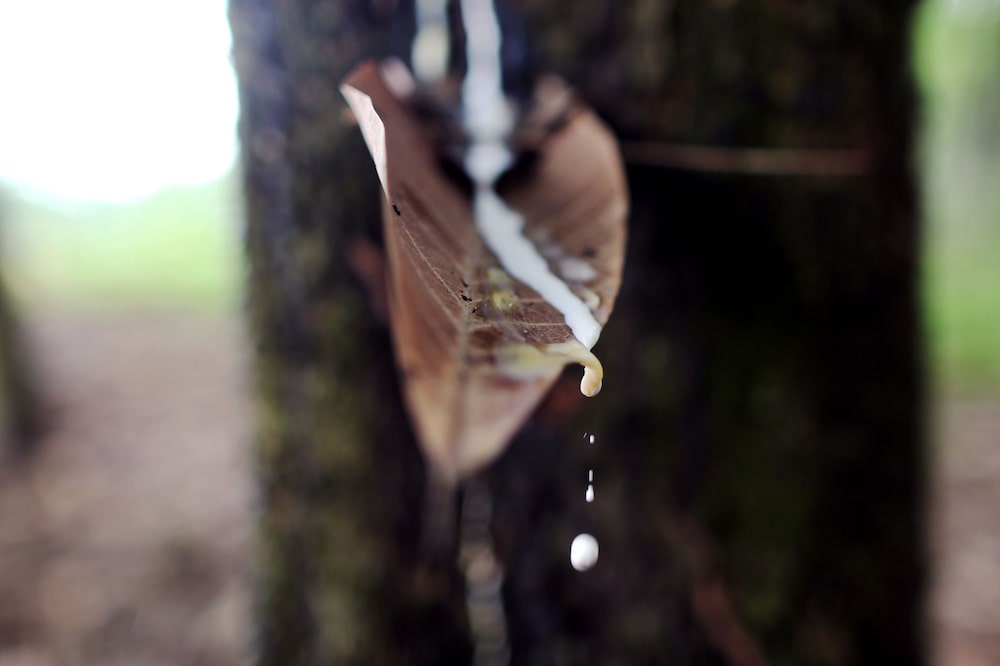Bogotá — The Latin American rubber industry is seeking to plug a gap in the market caused by the container crisis, with the product’s supply interrupted from other parts of the world, as local production has strengthened in some markets in the region, sources in the sector told Bloomberg Línea.
Global rubber exports totaled 20.8 million metric tons in 2020, and between January and September last year totaled more than 16.8 million tons, with Asia being the main source of the raw material, according to figures from Statista.
China was the largest importer of rubber in the world in 2020, followed by Malaysia and the United States in terms of value, while the global rubber market is forecast to be worth $60.4 billion by 2026.
Javier Giraldo, Deputy Chief Of Party and Marketing and Agribusiness Director of USAID’s Producer to Markets Alliance, told Bloomberg Línea that the logistics crisis generated a deficit in the supply of rubber for processing in the Latin American market, and which is mainly sourced from Asia.
In the case of Colombia, “domestic demand was generated, which favored local production, imports were replaced, and the rubber chain managed to increase exports to levels not previously achieved”.
Read More: Colombian Coffee Production, Exports Fall Amid Climate Change
According to the U.S. Agency for International Development (USAID) specialist, natural rubber production exists in several Latin American countries, the largest market being Brazil (185,000 tons), followed by Guatemala (96,000 tons), Mexico (15,000 tons) and Colombia (14,000 tons).
“Of these countries, only Guatemala and Colombia export rubber as a raw material; the others consume the production and import rubber from Asia. The Latin American country that exports the most rubber products is Brazil,” Giraldo said.
“The rubber processing sector in Latin America is very large,” Giraldo said, explaining that among the countries that process the raw material “production totals more than 800,000 tons, making for a very varied industry”
Read More: Big Beef Loan Scrapped Amid Uproar Over Amazon Deforestation

For his part, Fernando García, executive director of the Colombian rubber confederation (Cenicaucho), told Bloomberg Línea that in Colombia, “for every four hectares of rubber plantations, one direct job and three indirect jobs are generated annually, benefiting more than 9,000 families”.
However, he acknowledges that there are various environmental challenges and, as a result, “it is important that plantations can certify the necessary carbon credits so that the entire industry is carbon neutral.”
“And the countries that have made a pact to be carbon neutral in the next 10 and 20 years can achieve this in some way with the carbon credits that the rubber sectors in each of the countries are contributing,” García said.
Read More: Colombia Is Testing the Waters for Carbon-Neutral Crude
USAID’s Giraldo said Latin America is also advancing in several initiatives regarding the circular economy, such as the reuse of tires for the manufacture of flooring, as well as the use of gloves and balloons in other by-products such as children’s toys.
Looking to the future potential of the sector, he believes Latin America has the capacity to produce between one million and 1.5 million tons of rubber over the next five years, although that figure is still very low compared to the leading markets in the sector, with Asia producing more than 90% of the world’s natural rubber.
Both sector specialists participated recently in a meeting of participants in the natural rubber chain, which saw the closure of more than 20 deals in various sectors of the industry, such as technically specified rubber (TSR), latex, sheet, coagulum rubber and finished products, with a value of $2.5 billion.
Translated from the Spanish by Adam Critchley
Also Read:

